
How to Prepare Your Home for a Service Visit Effectively
Preparing your home for a service visit can make all the difference in ensuring a smooth, efficient, and secure experience. When a trusted service professional—sometimes even a roofer fixer if roof repairs are needed—arrives to work on your home, it is essential to have every detail arranged beforehand. This article explains how to prepare by focusing on appointment confirmation, creating a safe service area, managing pets and children, gathering critical information about the work needed (or contacting a mold remediation service if signs of water damage are evident), addressing access and security, preparing home systems and utilities (including ensuring that hvac-services components are easily accessible), planning for payment and post-service reviews, and developing a pre-arrival maintenance checklist. By following these guidelines, you protect your property, boost customer satisfaction, and set the stage for a successful service call with experts who adhere to high standards in duct work, pest control, irrigation, and other essential tasks. Each section of this guide includes a series of substeps that detail exactly what you need to do to prepare your home, supported by examples and detailed explanations. When you apply these steps, you not only improve the efficiency and speed of the service but also ensure that sensitive items and personal belongings remain safe throughout the visit. Let’s explore every aspect step by step.

Confirm Appointment Details and Service Scope
Before your service visit begins, confirm all the details. This step ensures that both you and the service professional have the correct timing, expectations, and understanding of the work that needs to be done. The initial confirmation is critical to avoid potential delays or misunderstandings that might impact the home maintenance services list, indoor air quality tasks, or exterior maintenance projects.
Verify Date Time and Expected Duration
Confirm the date, the time of arrival, and the estimated duration of the service. It is important to understand how long the task will take. This helps to plan your day and ensure that you are available to monitor progress if needed. For example, if your service involves repairing ceiling fans or checking duct airflow, knowing the duration will help you arrange your schedule effectively. Confirming these details reduces stress and ensures that you and the service provider are synchronized, thereby boosting customer satisfaction and reducing disruptions.
Clarify the Specific Services to Be Performed
Make sure you understand and confirm exactly what service will be provided. Ask specific questions about the scope of the work. If you require tasks such as pest control, chimney cleaning, or external painting, clarify each one with the professional. This ensures that all components—from inspecting a sump pump to addressing a roof repair—are covered. Clarity in service scope minimizes any chance of miscommunication and avoids unexpected expenses. Being well-informed also highlights the importance of following a custom home building checklist when multiple tasks are involved.
Inquire About Any Pre-Visit Requirements From the Company
Some visits demand that you prepare items in advance. Ask if there are specific guidelines like having certain documents ready, securing particular areas in your home, or reviewing warranty information. When preparing for services such as checking insulation in drywall or setting up irrigation systems, understanding these prerequisites is essential. Following these guidelines can significantly expedite the service process. In addition, confirming any special requirements upfront demonstrates professional engagement with servicepronation.com’s trusted network.
Obtain Contact Information for the Assigned Professional
Lastly, get the name and contact information of the designated service professional. This allows you to communicate any last-minute changes and ensures you can reach out directly if needed. It is crucial for addressing real-time concerns during emergencies like sudden floods or when a sump pump fails. This step supports home maintenance log updates and verifies that the service provider is a quality representative of the company. Being in direct contact helps build a relationship based on trust and quality, reinforcing a safe and reliable service experience.
Key Takeaways:
- Confirming appointment details prevents scheduling conflicts and unexpected delays.
- Clarify the scope of work to ensure all necessary tasks, from duct inspection to roofing checks, are covered.
- Inquiring about pre-visit requirements and acquiring contact information supports clear communication and trust.
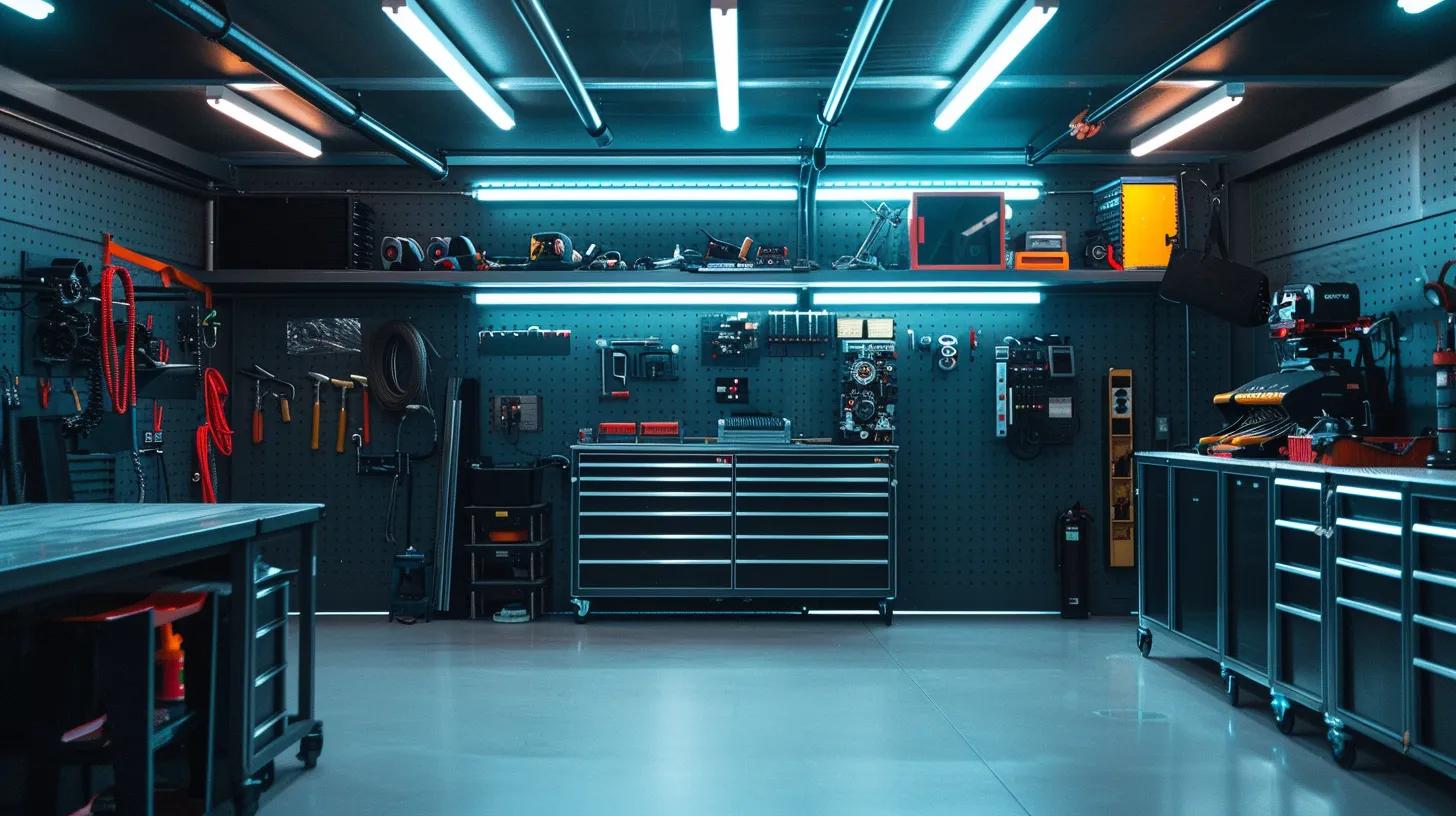
Create a Clear and Safe Work Area
A clutter-free and secure work area maximizes efficiency and minimizes any risk of damage or injury during the visit. Preparing your environment will not only improve the speed of tasks such as ceiling fan repair or drywall inspection but also ensure that everyone, including service professionals, works in optimal conditions. A well-arranged service area reflects customer satisfaction and supports best practices in property maintenance management. This section discusses the essential steps to create a safe zone that accommodates tasks like flood prevention, pest control inspection, and exterior maintenance without hindrance.
Remove Obstacles and Clutter From Pathways
Before the service team begins their work, clear all walkways and work zones. Remove any items that could obstruct access to utility panels, circuit breakers, and other potentially sensitive areas. Items like decorative mulch, garden tools near the door, or indoor plant stands near entryways should be relocated. By ensuring that floors and hallways are clear, you not only protect your belongings but also allow the technician to move freely and safely. This step is also beneficial if the work involves heavy tasks where ladders must be set up safely near windows or on the property care route.
Ensure Adequate Lighting in the Work Zone
Sufficient lighting is essential for precision work. The service professional may need clear visibility for tasks such as inspecting a ceiling fan, checking for mold in the attic, or assessing the condition of exterior paint. Ensure that all areas where work will occur have proper lighting. This may involve turning on extra lamps or temporarily relocating bulky items that block natural light. Proper lighting helps in identifying issues like water damage around sinks or leaks near the roof. It also renders the work area more secure, promoting a safe experience and reducing the risk of injury when tools or materials are in use.
Relocate Fragile or Valuable Items Away From the Area
Protect your valuables by removing them from the service zone. This includes delicate electronics, expensive artwork, jewelry, and any items considered high-risk during a service visit—such as antique furniture or heirlooms. Taking the precaution of moving these items not only prevents accidental damage but also minimizes liability concerns for both parties. Additionally, clearing delicate items supports a more effective review of the home maintenance checklist and allows for thorough cleaning afterward. In cases where inspections involve sensitive equipment like a home inspector checking the HVAC system or an elevator mechanism, keeping valuables safely stored ensures a worry-free process.
Designate a Specific Entry and Exit Point for Service Personnel
Clearly mark and communicate which door or pathway should be used for entry and exit. This organized approach simplifies access to the necessary areas connected to your home systems. For example, if the service primarily involves work in the kitchen area or around the sump pump, ensuring that there is an unobstructed route helps the technician begin and conclude work effectively. Clearly designated access points are particularly helpful in gated communities or buildings with security protocols. This strategy supports a streamlined, safe operation that adheres to building code and property maintenance management protocols.
Key Takeaways:
- Clear the area of obstacles to enable safe and efficient work.
- Ensure adequate lighting to aid in precision tasks and inspections.
- Protect fragile items by relocating them outside the work area.
- Clearly designate an access route to streamline the service visit.

Manage Pets and Children for Safety and Efficiency
Ensuring the safety of your pets and children during a service visit is critical. Service professionals need to work undisturbed, and having pets or children nearby can lead to unwanted distractions or even safety hazards. This section outlines how to properly manage and secure young family members and pets to create an environment that supports efficient tasks—from checking duct systems to performing exterior maintenance checks. Taking these precautions not only speeds up the service process but also minimizes liability and ensures everyone’s well-being. By taking a proactive role in managing pets and kids, you create a supportive, secure atmosphere that fosters customer satisfaction and highlights responsible property care.
Secure Pets in a Separate Room or Crate
If you have pets, the first step is to secure them in a separate room or safe crate. This prevents them from interfering with the work process and eliminates the risk of them getting injured or causing accidental damage during tasks. For example, a curious dog might disrupt a technician while they are inspecting an HVAC system, or a cat might knock over valuable items when exploring unfamiliar surroundings. Setting up a quiet, confined space not only protects your pets but also helps the service professional concentrate on high-stakes tasks like inspecting a flood-prone area or verifying sump pump operation. This practice supports tasks based on the home maintenance services list by keeping the work area clear.
Inform Service Personnel About Any Pets on the Property
It is important to notify the service professional about any pets on the premises. This communication allows them to take extra precautions and adjust their work habits if necessary. For instance, if a technician is working near the pet’s area to install a new window or pest control system, knowing about the situation in advance may cause them to be more cautious. Simple warnings help in establishing a secure and collaborative relationship between you and the service provider. Additionally, this openness ensures that all parties understand the environment, thereby supporting better execution of tasks while minimizing distractions and potential risks.
Arrange for Children to Be Supervised Away From the Work Area
When children are present, ensure that they are supervised by another adult and kept away from the work area. This not only protects them but also allows the service professional to work without interruption. For instance, if a technician is repairing components like a ceiling fan or inspecting a duct, a distracted child might inadvertently remove equipment or disturb delicate setups. Designate a safe play area or ensure that a babysitter is present during the service visit. This precaution is essential for maintaining a productive and hazard-free environment. Organizing supervision also lends itself to improved customer satisfaction and safeguards the reputation of home maintenance services, which require meticulous planning and safe execution.
Minimize Distractions for the Service Professional
To maintain efficiency, minimize other types of distractions. Inform anyone in the home—whether family members or roommates—that a service visit is taking place, and ask them to avoid the work area. This ensures that the service professional can focus fully on tasks such as inspecting the duct, checking the elevator, or assessing the condition of a ceiling fan. An environment free from disruptions helps guarantee that the work is done accurately and in a timely manner. Moreover, reducing distractions improves the overall efficiency of the visit, leading to better outcomes for your home repair or maintenance service.
Key Takeaways:
- Secure pets in a separate, safe area to avoid interference.
- Inform service personnel about any pets present for precautionary measures.
- Arrange babysitting or supervision for children during service visits.
- Minimizing distractions promotes a focused and efficient work environment.

Gather Relevant Information and Document Issues
Before your service professional arrives, gather all pertinent information and document any issues. This procedure is especially critical if you have multiple concerns regarding your home’s maintenance, such as duct cleaning, inspecting your clothes dryer, or verifying the condition of your sump pump. Documenting issues beforehand helps the service expert understand your problem areas, provides a reference point for further repairs, and enhances communication during the visit. Detailed preparation such as compiling documents and photographs ensures that tasks are tackled systematically and according to a verified home improvement checklist or maintenance log. This section outlines the approaches that help you identify problems, document them effectively, and facilitate a smooth service visit.
Prepare a List of Problems or Symptoms
Start by making a comprehensive, written list of all issues observed in your home. Note every detail from minor inconveniences like a loose window latch to major issues such as recurring water leaks or faulty ceiling fans. This list should include observations regarding the general condition of items such as the flooring, inspection points like the circuit breakers, and even updates on property care like window repairs. The list not only guides the technician but also helps you recall any prior issues mentioned during the last service visit. Documenting these details is linked to improved diagnosis and faster resolution during tasks involving home remodeling checklists or emergency maintenance protocols.
Locate Any Manuals or Warranties for Equipment Being Serviced
Gather any relevant documentation associated with your equipment. This includes user manuals, warranties, and service histories. If the service pertains to repairing an air conditioner, troubleshooting a flooded area, or maintaining a chimney, having access to manuals can assist the technician in quickly understanding the specifications and requirements. These documents provide background information that is essential for accurately diagnosing the problem. Warranties are particularly important if you need to check coverage details, which can be referenced for guidance on whether additional parts or services might be covered at no extra expense. This precautionary step supports efficient service visits and contributes to a comprehensive home maintenance log.
Take Photos or Videos of the Issue if Applicable
Visual documentation is extremely useful. Before the service professional arrives, use your phone to take clear photos or videos of the areas needing attention. Whether it’s a visual inspection of a faulty duct, signs of damage on the ceiling, or evidence of insect damage near the mulch, these visuals provide immediate context. Photographic evidence can verify your observations and may expedite the service process. For example, if you notice a leak or water damage in the bathroom, snapping several photos will help the technician understand the problem and arrive with the correct tools. This proactive approach also supports the creation of a record that can be referred to if further service is needed later.
Note Any Previous Repairs or Property Maintenance History
Record any previous repairs or maintenance activities that have been conducted at the property. If there has been a recent roof repair, a previous inspection for mold, or documented issues with a sump pump, include these details in your documentation. This historical context is important because recurring issues may indicate a larger underlying problem that requires a more detailed inspection. Including dates, service provider names, and notes on outcomes creates a valuable information bank that can guide current repairs and inform future maintenance decisions. This step is crucial for staying detailed and methodical when preparing for services outlined by national fire protection association guidelines or home repair checklists.
Key Takeaways:
- Create a detailed list of home issues for the technician.
- Compile manuals and warranty documents for quick reference.
- Use photos and videos to visually document problems.
- Record any previous repair history to provide context and ensure effective troubleshooting.
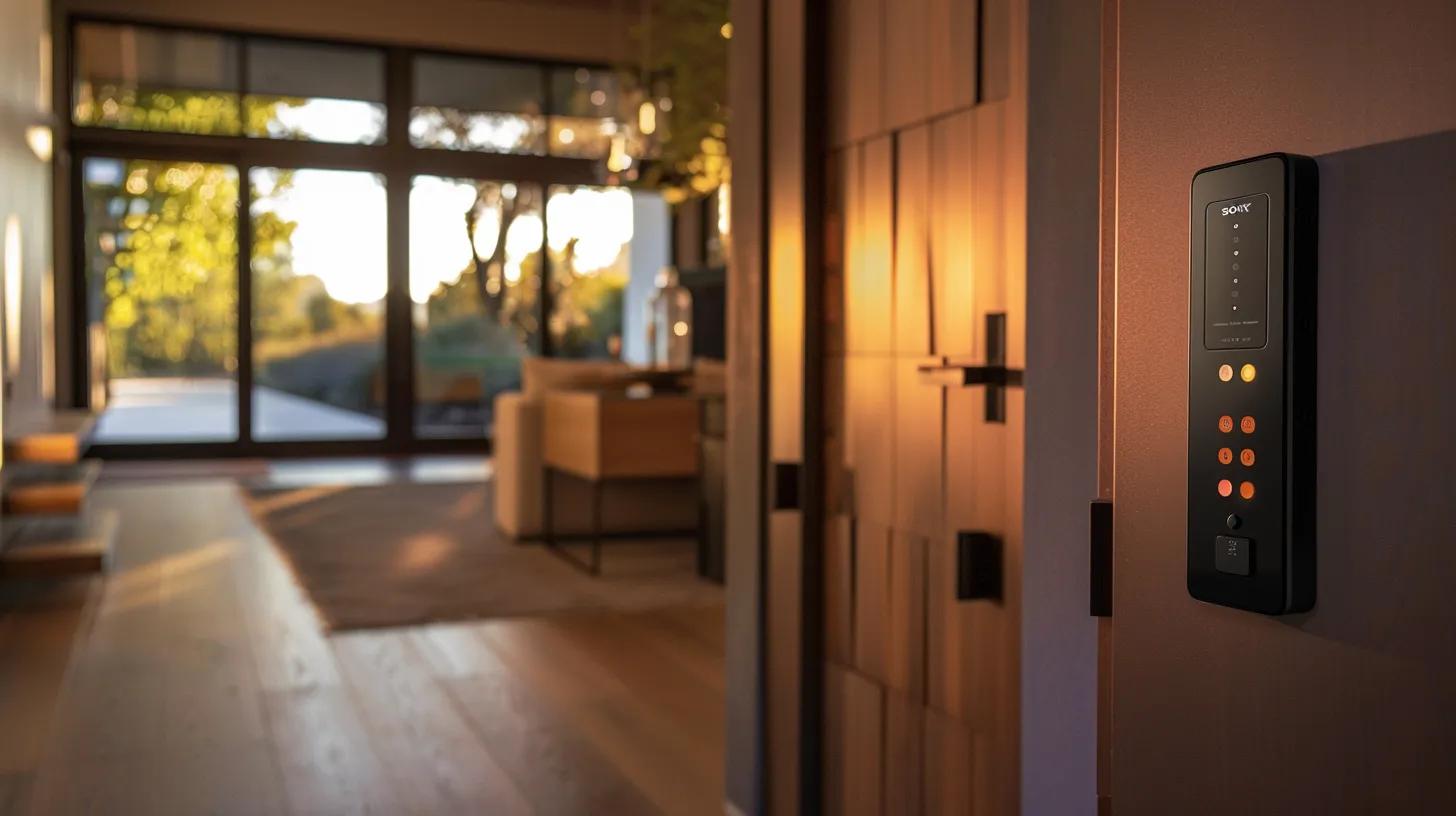
Address Access and Security Considerations
Ensuring smooth access and security during a service visit protects both your home and your sensitive information. This preparation is vital for maintaining a secure environment, particularly when service visits involve accessing private areas like the attic, basement, or utility circuits. Addressing access and security considerations prevents delays, minimizes the risk of unauthorized entry, and builds trust by confirming that all safety protocols are met. This section outlines specific steps to secure your property before the professional arrives, covering everything from key management to notifying security personnel. These measures foster a safe and organized service experience, reflecting best practices in property maintenance management and boosting customer satisfaction.
Ensure Someone Authorized Is Present to Grant Access
Before the arrival of the service professional, confirm that an authorized person is available to provide access. This could include a family member, neighbor, or trusted friend who is prepared to open doors and help navigate through restricted areas. Having an authorized person on site is crucial for tasks that might require immediate attention, such as checking a malfunctioning elevator or securing a sump pump. This step ensures that there are no delays in granting entry, allowing the service provider to work efficiently and meet the scheduled time frame. It also maximizes security, ensuring that only approved individuals are present during the visit.
Prepare Keys or Access Codes if Necessary
If your home features smart locks or gated entry systems, make sure you have prepared the relevant keys or access codes in advance. Placing them in a secure, visible spot allows the service professional to access areas that require special codes without compromising your security. For example, if the service includes checking an irrigation system or inspecting a circuit breaker panel, having quick access significantly reduces time spent fumbling for access and supports a smooth workflow. By providing prepared access, you also limit the likelihood of miscommunication or missed appointments due to locked doors, thereby giving both you and the service provider confidence during tasks such as reviewing a home remodeling checklist.
Inform Security Personnel or Gated Community Office if Applicable
If you reside in a gated community or secure building, inform the on-site security personnel or office about your scheduled service visit. This proactive communication prevents delays at entry points and ensures that security staff are aware of the technician’s visit. For instance, if your home management system requires verification at a reception area, notifying them beforehand creates a welcoming environment for the service professional. It avoids potential delays caused by routine security checks and reinforces controlled access—vital when sensitive information or high-value items like art pieces are present. Such coordination supports a streamlined service experience and upholds building code and customer service standards.
Secure Personal Belongings and Sensitive Information
Before the service visit, take time to secure personal belongings and any sensitive documentation. Lock away important documents, valuables, and any digital devices that may contain private data. This practice minimizes any risk of loss or theft and leaves the service area clear for focused work. Whether the scope of work involves routine tasks like ceiling fan inspection or emergency maintenance for a flooded area, safeguarding your personal items is crucial. Doing so not only protects you from liability but also underscores your commitment to customer satisfaction and best practices in home maintenance management. The extra minute spent securing your belongings can prevent significant complications during and after the service.
Key Takeaways:
- Ensure an authorized person is available to provide entry to the professional.
- Prepare keys or access codes in advance for smart home systems.
- Communicate with on-site security to streamline the access process.
- Secure personal belongings and sensitive documents to protect privacy and property.
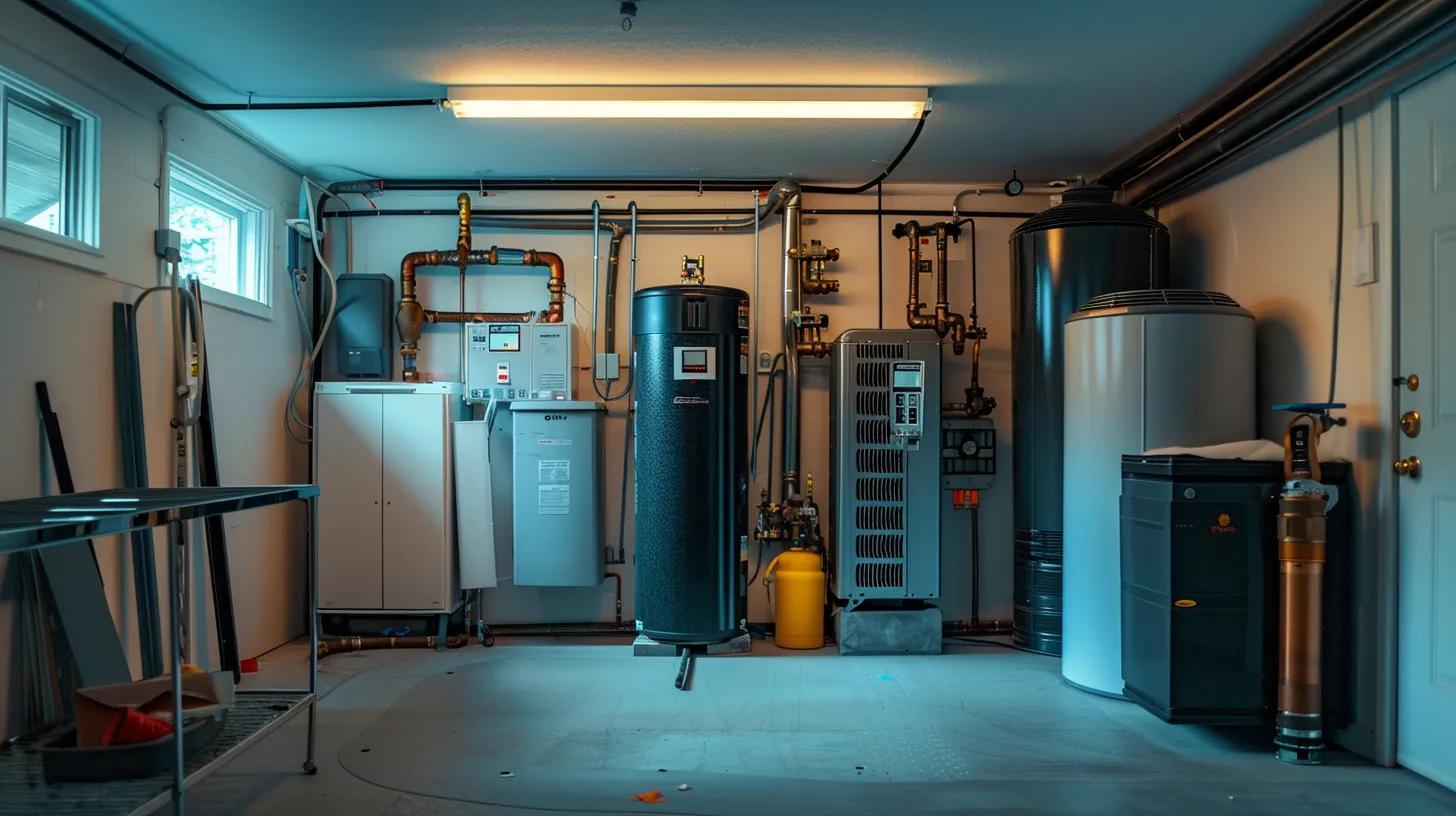
Prepare Your Home Systems and Utilities
Before a service professional arrives, verify that your home systems and utilities are in operational condition. This preparation is especially important for tasks involving the HVAC system, water heaters, sump pumps, or inspection of ceiling ducts. Ensuring that the relevant utilities—such as electricity, water, and gas—are active allows the technician to work safely and efficiently. It also confirms that the systems being inspected are functioning at a baseline level, which aids in identifying any anomalies quickly. By testing your utilities, knowing the location of main shut-off controls, and adjusting your thermostat if necessary, you guarantee a smooth and uninterrupted service. This section explains the detailed steps you should take to prepare your home systems for a service visit.
Ensure the Relevant Utility Is Active for the Service
Before the service visit begins, check that the utility related to the work is active. For example, if the service involves checking the functionality of your sump pump, ensure that the electrical power is on. Activate all necessary utilities that support the claim in your home maintenance log, whether it is for inspecting an HVAC system or reviewing the working condition of an elevator or ceiling fan. This basic step prevents misdiagnosis of a problem that could be caused by a simple power outage and ensures that the technician can run proper diagnostics. An active utility streamlines the identification of issues and supports repair efficiency.
Know the Location of Main Shut-Off Valves or Breakers
Familiarize yourself with the locations of your home’s main shut-off valves and circuit breakers. This knowledge is essential in case an emergency arises during the service. If the service professional encounters an unexpected problem, such as a water leak or an electrical fault, you can quickly intervene by turning off the respective valve or breaker. Making sure you have this information handy furthers safety, prevents extended damage from issues like flooding, and helps adhere to building code regulations. It also supports repair evaluations and reduces downtime during emergency maintenance services. Having this readiness contributes significantly to property maintenance management when unexpected issues surface.
Adjust Thermostat Settings if Work Affects HVAC Systems
If the service involves adjustments or repairs that might affect your HVAC system, pre-set your thermostat accordingly. For example, if your technician is servicing the heating system or checking a ventilation duct, ensure that the temperature is set to avoid unnecessary fluctuations. This minimizes discomfort during the visit and sets a controlled environment for precise HVAC diagnostics. Proper thermostat settings support better indoor air quality and help maintain your overall comfort level. Preparing your HVAC systems in advance also fosters quicker service delivery, allowing the technician to focus on diagnosing and fixing issues like duct blockages or electrical faults without distraction.
Complete a Basic Home Service Checklist for System Readiness
Create and review a simple checklist to ensure all relevant systems are prepared for inspection or repair. This checklist might include verifying that all utilities are active, confirming the location of successors such as main shut-off valves, and ensuring that configurations for smart home devices are optimal for the service. A structured checklist minimizes oversights and guarantees that nothing is left to chance, from lighting adjustments to water flow tests at the irrigation system. When you complete a checklist that aligns with a custom home building checklist, you secure a productive environment that permits the service provider to carry out work efficiently and safely. This proactive measure uplifts customer satisfaction and supports overall efficiency.
Key Takeaways:
- Verify that all relevant utilities are fully operational prior to service.
- Know the location of shut-off valves and breakers for swift emergency action.
- Adjust thermostat settings to maintain comfort and system functionality.
- Use a prepared checklist to ensure all home systems are ready and secure.

Plan for Payment and Post-Service Procedures
Before the service visit, it is essential to plan for payment and post-service procedures. This preparedness prevents delays, misunderstandings, and potential conflict regarding costs for services such as inspection of a home inspector’s assessment, ceiling fan repair, or maintenance checks for tools like a sump pump. Planning payment methods, understanding guarantees, and setting aside a designated review space ensures that the service concludes on a positive note. This section addresses the necessary steps to guarantee that you are fully prepared for the financial and logistical aspects of the service visit, underscoring adherence to a home maintenance services list and promoting overall customer satisfaction through quality interactions.
Understand Accepted Payment Methods Beforehand
Different service providers may accept different forms of payment. Prior to the visit, check which payment methods are accepted—whether it is credit card, debit card, or through a secure online system. Ensuring you know this information in advance prevents delays at the end of the service visit and reduces any ambiguity on the day. Understanding payment methods also helps in budgeting for tasks like exterior maintenance of your chimney or interior repairs for your ceiling fan. This step reinforces efficiency and preparedness on the part of the client and confirms that there will be no last-minute hitches when the bill is presented.
Have Payment Ready to Avoid Delays
Prepare the exact payment or a secure method to pay once the task is completed. If the service requires cash, ensure that you have the right amount available. If the provider accepts electronic payments, confirm that your device is charged and ready to process the transaction. Having payment ready ensures the service professional does not have to wait, which in turn speeds up the workflow for tasks such as duct inspections, maintenance of rental properties, or checking for flood risks in key areas. Timely payment also builds trust and reliability between you and the service provider, further underpinning the reputation of companies like servicepronation.com.
Inquire About Guarantees or Warranties on the Work
It is important to ask about any guarantees or warranties that come with the service. Knowing the warranty period and what it covers gives you peace of mind, particularly for major projects that involve intricate systems like a home inspection report or substantial repairs such as roof work. Guarantees help clarify the responsibility in case follow-up service is necessary. When you understand the terms of the warranty or guarantee, you are less likely to experience unexpected issues or additional costs in the future. This insight supports long-term customer satisfaction by ensuring that any concerns post-service are quickly addressed and resolved.
Designate a Space for Reviewing the Completed Work
Plan ahead by designating a specific area in your home where you can review the work that has been completed. This space should be comfortable and free from distractions so you can thoroughly inspect the finished project. Whether you are checking the functionality of a ceiling fan, examining the installation of a new air filter, or verifying the outcome of a pest control treatment, having a set review area enhances the post-service evaluation process. This dedicated space encourages open communication with the service professional when final adjustments are needed. Additionally, it facilitates the recording of details for your home maintenance calendar and ongoing property care management protocols.
Key Takeaways:
- Confirm payment methods in advance to avoid billing delays.
- Prepare and have payment ready before the service ends.
- Inquire about guarantees or warranties to cover future concerns.
- Designate an area for reviewing completed work to ensure satisfaction.

Develop a Pre-Arrival Home Maintenance Checklist for Smooth Operations
Creating a detailed pre-arrival home maintenance checklist ensures that every facet of your property is ready for the service professional’s arrival. This checklist supports tasks ranging from identifying issues with duct systems and sump pumps to confirming that your irrigation system and flood safeguards are functioning correctly. A systematic pre-arrival review reduces interruptions and prepares your home for an efficient, damage-free service visit. Additionally, it supports property maintenance management, eases scheduling, and enhances the overall experience by demonstrating preparedness and professionalism. In this section, you will find the vital elements to include in your checklist and strategies to ensure your home is as ready as possible for any necessary work.
Conduct a Quick Walk-Through of Your Property Maintenance Areas
Start your checklist by performing a thorough walk-through of all critical maintenance areas. Inspect areas that require attention, such as crawl spaces, basements, attics, and exterior surroundings like patios and driveways. During this walkthrough, note any issues related to structural integrity, water damage signs near sump pumps, or potential hazards connected to electrical systems. This proactive step ensures that no critical areas, including those requiring custom home building checklists or emergency maintenance protocols, are overlooked. Every issue noted helps guide the service professional to where attention is most needed, streamlining the entire process. This routine also assists with routine updates to your home repair log.
Check for Any Last-Minute Preparations Needed
Review your checklist to ensure all areas are ready and nothing was missed. This may include verifying that all keys are in place, ensuring that pets and children are set aside, and confirming that raised items like fragile decorative pieces have been relocated. Last-minute inspections also ensure that environmental factors, such as appropriate lighting in work areas, are set up. This rigorous review prevents last-minute scrambles that may delay or complicate tasks such as elevator maintenance, pest management, or exterior safety inspections. Being thorough now saves time and frustration during the service, ensuring a smooth operation.
Ensure Your Communication Devices Are Charged and Available
Before the service professional arrives, make sure your mobile phone or other communication devices are fully charged and at your disposal. This allows you to answer any calls, provide additional information if needed, and quickly resolve any issues that may arise during the service. Being reachable helps clarify any unexpected details during tasks that require documentation, like taking photos of a drywall problem or checking for insect activity near mulch. A charged communication device also ensures that you can promptly contact support if follow-up questions emerge during the inspection, supporting rapid problem resolution.
Review Your Home Service Checklist One Final Time
Finally, go over your comprehensive home service checklist one more time. Ensure that every step has been addressed, from confirming appointment details to securing sensitive items. This final review should cover every area that could impact the service, including indoor and outdoor zones, utility areas, and even digital records. A complete run-through builds confidence and guarantees that the service professional can focus solely on performing high-quality work. This final check is a key component in reducing miscommunication and ensuring that both you and the expert are aligned on the work expectations, reinforcing a structured approach to property care.
Key Takeaways:
- Perform a detailed walk-through to identify all maintenance concerns.
- Verify that last-minute preparations, including relocation of items, are complete.
- Ensure communication devices are charged for any required updates.
- Review your checklist thoroughly to guarantee that no detail is overlooked.
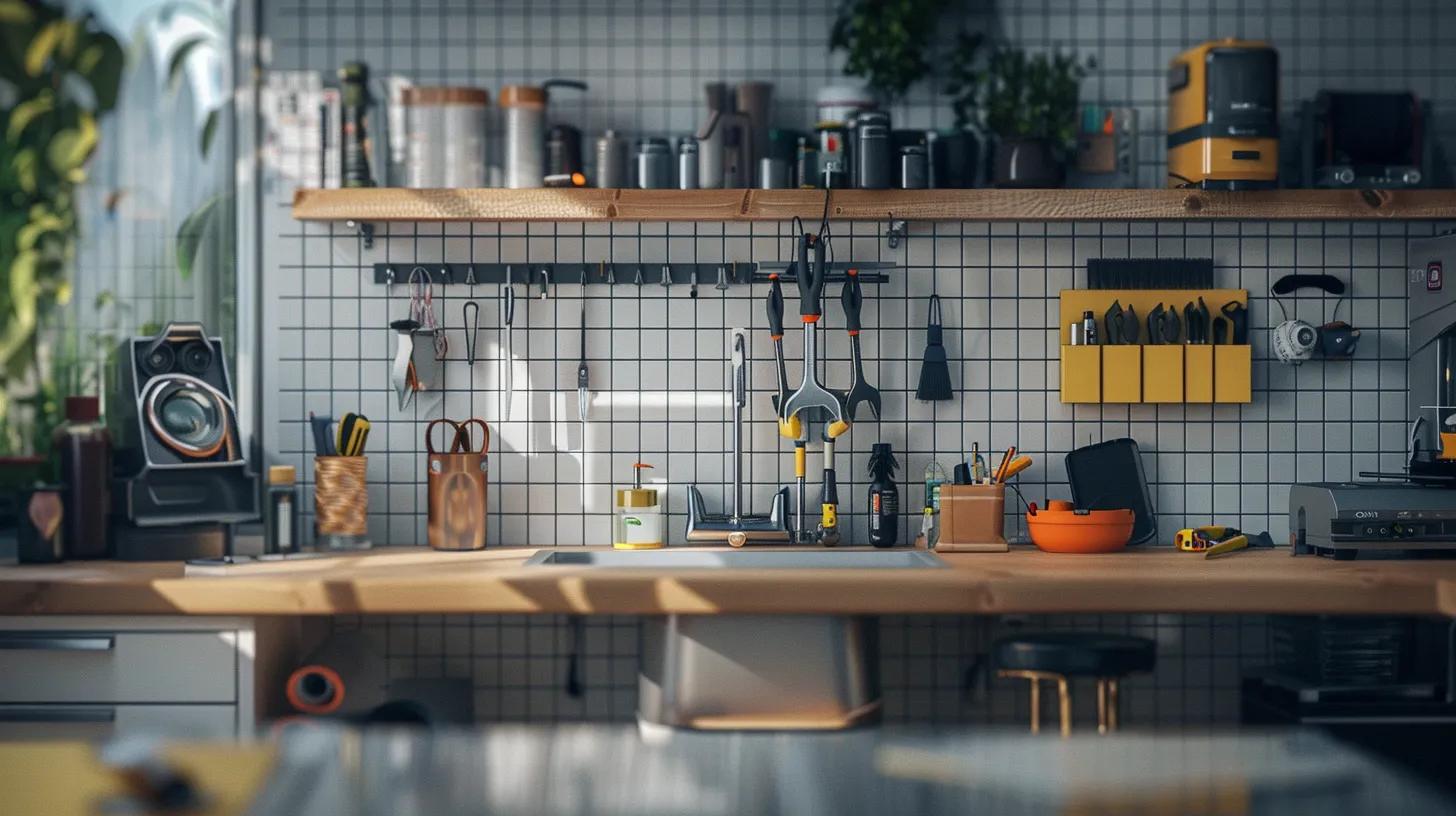
Preparing your home for a service visit involves careful planning and attention to many details. By confirming appointment specifics, creating a safe work area, managing pets and children, gathering necessary documentation, addressing access and security measures, preparing your utility systems, and planning for payment and post-service procedures, you greatly enhance the efficiency and effectiveness of the visit. These steps not only ensure that tasks—from duct checks to ceiling fan repairs—are completed efficiently, but also provide peace of mind and protect your property. Following the detailed guidelines outlined in this article means you are well-prepared to interact effectively with quality service professionals, ensuring customer satisfaction that meets high standards in property maintenance management.
Frequently Asked Questions
Q: Why is confirming appointment details important before a service visit? A: Confirming appointment details ensures that both you and the service professional are aligned on the date, time, expected duration, and scope of work. This step minimizes miscommunication and delays, ultimately boosting customer satisfaction and operational efficiency.
Q: What items should be removed to create a safe work area? A: Remove all obstacles and clutter, such as decorative items, furniture, and fragile objects that could impede access or damage during the service visit. Ensuring clear pathways and organized work zones improves safety and allows the technician to perform tasks like ceiling fan repairs or duct checks effectively.
Q: How can I ensure the safety of pets and children during the service? A: Secure pets in a separate room or crate and arrange for children to be supervised away from the work area. Additionally, inform the service personnel about any pets present to avoid distractions and ensure a safe, focused environment for the work.
Q: What should I document before the service professional arrives? A: Prepare a detailed list of issues, gather any related manuals or warranties, and take photos or videos of problem areas. Documenting previous repairs and maintenance history also helps the technician understand the context of the issue and plan effective repairs.
Q: How do I prepare my home systems and utilities for the service? A: Ensure that all relevant utilities such as electricity, water, and HVAC systems are active. Know the location of main shut-off valves or breakers, adjust the thermostat if needed, and complete a basic home service checklist to confirm that all systems are ready for inspection or repair.
Q: Why is it important to plan for payment and post-service procedures? A: Planning for payment helps avoid delays during the service completion, while inquiring about guarantees or warranties ensures that any potential follow-up repairs are covered. Designating a review space for established work enhances communication and confirms that the service has met your expectations.
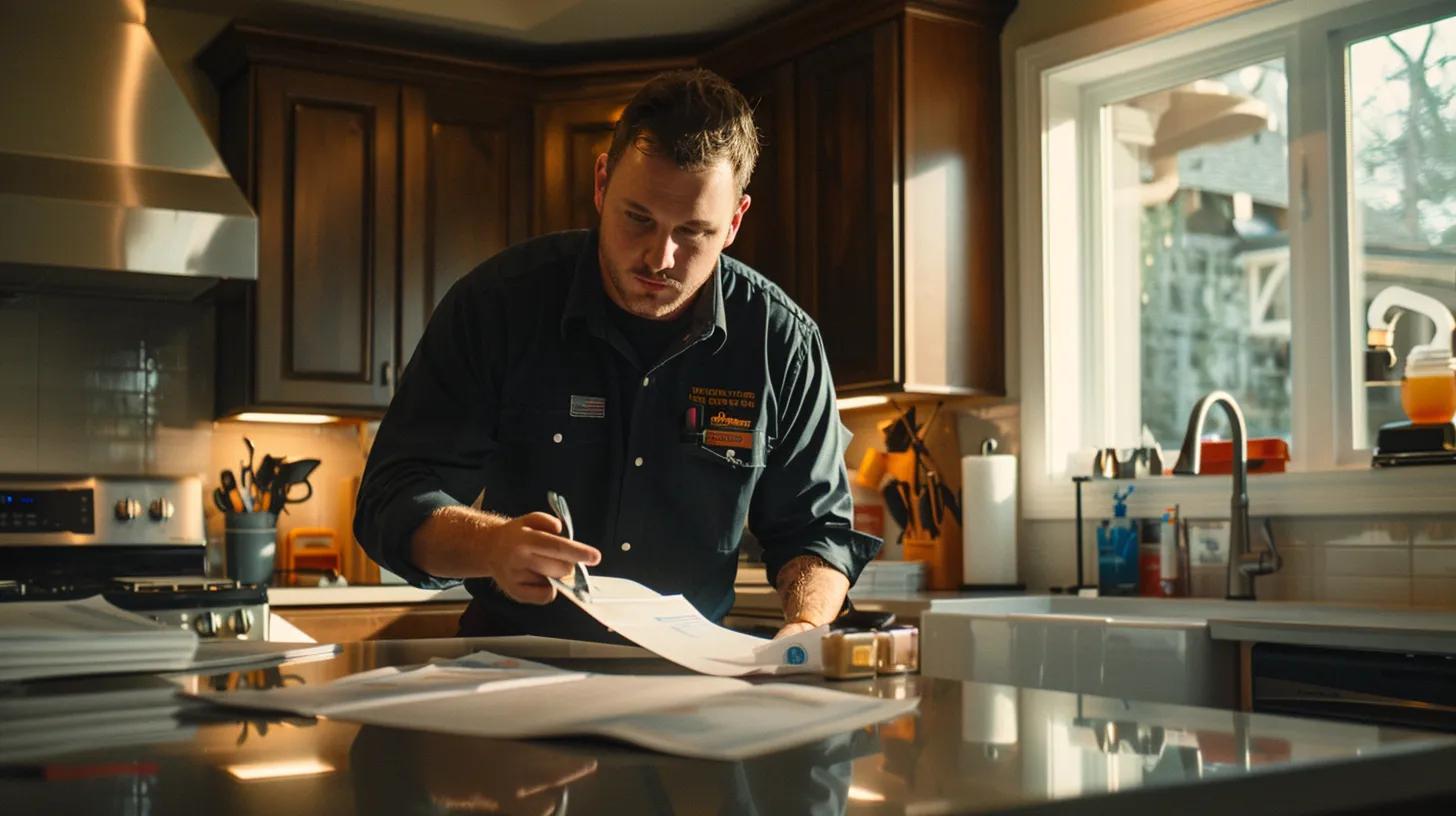
Final Thoughts
By preparing your home thoroughly for a service visit, you set the stage for a successful and efficient experience. Each step—from confirming appointment details to securing personal belongings—is designed to improve communication and ensure safety. Your proactive approach not only enhances customer satisfaction but also protects your property while allowing experts to do their job efficiently. Follow these guidelines and enjoy the peace of mind that comes from a well-prepared home.
